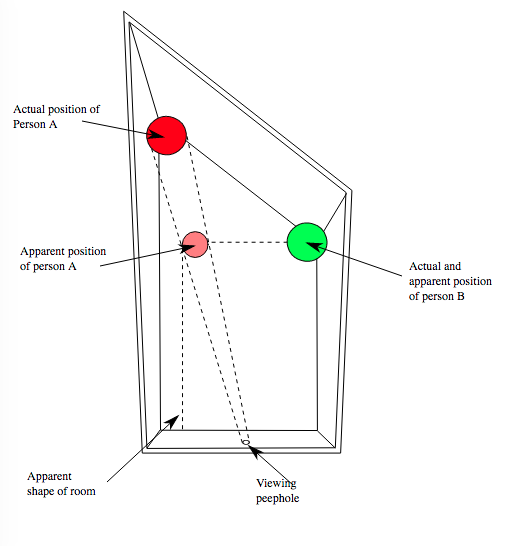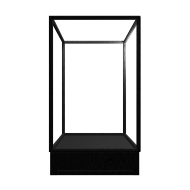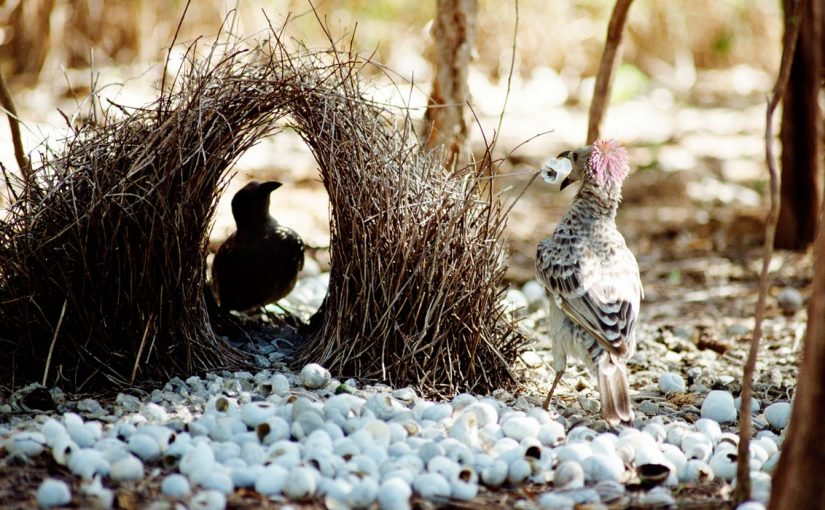Apart from humans, there’s at least one other species associated with the production of ‘art’: the Australian/New Guinea bowerbird builds elaborate architectural constructions to lure its mate to its lair.
These ‘nests’ are decorated with shells, leafs, flowers, pieces of plastic; anything the bird can find.
The constructions are so sophisticated, they make use of false perspective: a visual illusion that either optically enlarges or diminishes an object by contextual placement of other objects.
Baroque altars, for example, look taller because sculptures at the top are a bit smaller than our eye would expect, based on our default perspective situation. This illusion obviously is meant to increase the notion of the almighty power of either god or the church.
The bowerbirds, however, seem to use forced perspective to create more or less flat surfaces: objects further away are a bit bigger, contradicting default perspective. Consequently, the male bowerbird – who is of the building gender – seems smaller, when standing at the end of a bowerbuilding or bowerlane. This is an odd contradiction to what would be expected, because why would a male bower bird use special effects to make him look less impressive?
Maybe he wants the construction to look even bigger?
Maybe the flat surface illusion is part of the male bowerbird’s attractive features?
Thanks, Jan Verpooten, for pointing this out to me.

Sources:
Guardian, Bowerbird builds a house of illusions to improve his chances of mating, by Mo Constandi, 19 Jan 2012
Wired, Absurd Creature of the Week: Meet the Bird That Lies and Tricks Its Way Into Sex, by Matt Simon, 2 Dec 2016
Nature, Perspective of a Bird, by Casey Dunn, 26 Oct 2010
Sciencemag, Illusions Promote Mating Success in Great Bowerbirds, by
Laura A. Kelley, John A. Endler, 20 Jan 2012

